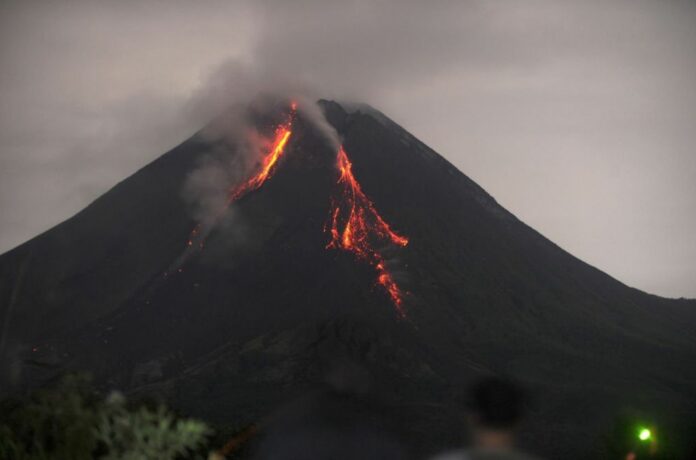Medieval Monks’ Observations of Lunar Eclipses Help Solve Mysteries of Massive Volcanic Eruptions
An international team led by researchers at the UNIGE has pinpointed the dates of some of history’s most devastating volcanic eruptions by delving into medieval manuscripts.
Unknowingly, monks in the middle ages observed the night sky and noted some of the biggest volcanic outbursts ever.
To precisely date some of the largest volcanic eruptions in history, an international team of researchers headed by the University of Geneva (UNIGE) relied on ice core and tree ring data as well as readings from European and Middle Eastern chronicles from the 12th and 13th centuries.
Their findings, which were published in the journal Nature, give us new information about one of the most volcanically active times in Earth’s history, which some people think helped start the Little Ice Age, a long period of cooling when European glaciers moved north.
The researchers spent nearly five years meticulously scrutinizing hundreds of annals and chronicles from various regions across Europe and the Middle East. Their objective was to locate any mention of total lunar eclipses and their coloration. Ordinarily, during a total lunar eclipse, the moon enters the Earth’s shadow and remains visible as a reddish orb due to sunlight bending around the Earth’s atmosphere. However, after a colossal volcanic eruption, an abundance of dust in the stratosphere, where commercial aircraft fly, can cause the eclipsed moon to nearly vanish.
During the Middle Ages, chroniclers meticulously recorded various significant historical events, ranging from the accomplishments of royalty and religious figures to wars, natural disasters, and famines. They also paid close attention to celestial occurrences that could portend misfortune. In particular, the monks, who were well-versed in the Book of Revelation’s apocalyptic prophecies, took special care to note the coloration of the moon. Out of the 64 total lunar eclipses that took place in Europe between 1100 and 1300, these chroniclers dutifully documented 51. In five of these instances, they also mentioned that the moon was unusually dark.
The significance of Japanese scribes
Sébastien Guillet, the senior research associate at the Institute for Environmental Sciences at the University of Geneva (UNIGE) and the lead author of the study, was asked what led him to link the monks’ observations of the brightness and color of eclipsed moons to volcanic activity
He shared that the idea came to him while listening to Pink Floyd’s Dark Side of the Moon album.
“I was listening to Pink Floyd’s Dark Side of the Moon album when I realised that the darkest lunar eclipses all occurred within a year or so of major volcanic eruptions. Since we know the exact days of the eclipses, it opened the possibility of using the sightings to narrow down when the eruptions must have happened.”
The team of researchers also discovered that Japanese scribes paid close attention to lunar eclipses. One of the most famous scribes, Fujiwara no Teika, wrote about a particularly ominous event: a dark eclipse on December 2nd, 1229.
They described the event as “the old folk had never seen it like this time, with the location of the disk of the Moon not visible, just as if it had disappeared during the eclipse… It was truly something to fear.”
This dust not only obstructed the moon’s appearance but also led to a cooling effect on summer temperatures by limiting the amount of sunlight that reached the Earth’s surface, causing crop failures and devastation.
Cross-referencing text and data
Markus Stoffel, a full professor at the Institute for Environmental Sciences at the University of Geneva (UNIGE), who co-designed the study and is an expert in converting tree ring measurements into climate data, noted that prior research has shown that powerful tropical volcanic eruptions can cause global cooling of approximately 1°C over several years. Additionally, these eruptions can create precipitation irregularities, resulting in droughts in some regions and flooding in others.
Despite the notable climatic effects caused by volcanic eruptions, the people of the time could not have fathomed that the crop failures or abnormal lunar eclipses had any correlation with volcanic activity. This was because, except for one, the eruptions themselves were not documented.
“We only knew about these eruptions because they left traces in the ice of Antarctica and Greenland,” adds co-author Clive Oppenheimer. “By putting together the information from ice cores and the descriptions from medieval texts we can now make better estimates of when and where some of the biggest eruptions of this period occurred.”
Social and climatic effects
Sébastien Guillet collaborated with climate modelers to take full advantage of this integration, utilizing their expertise to calculate the probable timing of the volcanic eruptions.
“Knowing the season when the volcanoes erupted is essential, as it influences the spread of the volcanic dust and the cooling and other climate anomalies associated with these eruptions,” he adds.
Not only did the study help to pinpoint the timing and magnitude of these events, but the results are particularly noteworthy because the time period between 1100 and 1300 is widely regarded as one of the most volcanically active periods in history, as confirmed by ice core evidence. Out of the 15 eruptions analyzed in the study, one that occurred during the mid-13th century was comparable in size to the famous 1815 Tambora eruption, which resulted in the “year without a summer” in 1816. The cumulative impact of these medieval eruptions on the Earth’s climate may have contributed to the Little Ice Age, a period when winter ice fairs were held on the frozen rivers of Europe.
“Improving our knowledge of these otherwise mysterious eruptions, is crucial to understanding whether and how past volcanism affected not only climate but also society during the Middle Ages,” concludes the author.
Source: 10.1038/s41586-023-05751-z
Image Credit: Dasril Roszandi/Anadolu Agency via Getty Images
